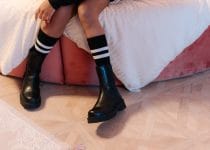The Ultimate Guide to Choosing the Perfect Running Shoes
The Ultimate Guide to Choosing the Perfect Running Shoes
Finding the perfect running shoes can dramatically improve your performance and comfort, whether you’re a seasoned marathoner or a casual jogger. With numerous brands, models, and features available, making the right choice might seem overwhelming. This ultimate guide will help you navigate through the essential factors to consider, ensuring you pick the best running shoes for your needs.
Why Choosing the Right Running Shoes Matters
Your running shoes are the most critical piece of gear in your fitness arsenal. Ill-fitting or improper shoes can lead to discomfort, inefficiency, and even injuries. According to a study published by the American Journal of Sports Medicine, runners who wore shoes that didn’t match their foot type were 2.5 times more likely to suffer from injuries.
Choosing the right pair can enhance your running experience, improve your form, and help prevent issues such as blisters, plantar fasciitis, and shin splints.
Understanding Your Foot Type
Your foot type plays a crucial role in determining the kind of running shoe you need. Here are the three main foot types:
- Neutral: If you have a neutral arch, your foot lands on the outside of the heel and rolls inward slightly to absorb shock. Runners with a neutral foot type benefit from shoes that offer a balance of cushioning and support.
- Overpronation: Overpronators have a low arch or flat feet, causing their foot to roll inward excessively. Stability or motion control shoes with added support and structure are ideal for overpronators.
- Supination: Also known as underpronation, supinators have high arches, causing their foot to roll outward. Cushioned shoes with extra shock absorption are best suited for supinators.
Determining Your Running Style
Understanding your running style is essential to choosing the right shoes. Consider the following aspects:
- Stride Length: Do you have a short, medium, or long stride? This can impact the wear pattern on your shoes.
- Foot Strike: Do you land on your heel, midfoot, or forefoot? Heel strikers generally need more cushioning in the heel, while midfoot and forefoot strikers need shoes with more forefoot support.
- Terrain: Do you run on roads, trails, or tracks? Road shoes are designed for pavement and light trails, while trail shoes offer more traction and protection for off-road surfaces. Track shoes are lightweight and designed for speed.
Key Features to Look for in Running Shoes
When choosing running shoes, consider the following critical features:
Cushioning
Cushioning helps absorb impact and provides comfort during your run. Different types of cushioning include:
- Maximal Cushioning: Best for long-distance runners who need extra shock absorption.
- Moderate Cushioning: Suitable for most runners offering a balance between comfort and responsiveness.
- Minimal Cushioning: Preferred by those who want a more natural running experience.
Support
Support is critical, especially for runners with overpronation or other biomechanical issues. Types of support include:
- Neutral Support: Suitable for runners with a neutral foot type.
- Stability Support: Provides added arch support and is ideal for mild to moderate overpronators.
- Motion Control: Offers maximum support for severe overpronators.
Fit
The fit of your running shoes is paramount. Consider these tips for the perfect fit:
- Toe Room: Ensure there’s about a thumb’s width of space between your longest toe and the end of the shoe.
- Width: Your shoes should fit snugly but not too tight. They should accommodate the width of your foot without squeezing.
- Heel Fit: Your heel should fit snugly in the shoe without slipping.
Durability
Running shoes are an investment, so durability is essential. High-quality materials and construction will ensure your shoes last longer and provide consistent performance.
Top Brands to Consider
Several reputable brands offer high-quality running shoes. Some of the top brands include:
- Nike: Known for innovative designs and technology, Nike offers a wide range of running shoes for all types of runners.
- Adidas: Renowned for their Boost cushioning, Adidas provides durable and comfortable running shoes.
- Asics: Popular for their Gel cushioning system, Asics shoes offer excellent support and comfort.
- Brooks: Specializing in running shoes, Brooks is known for their focus on comfort and performance.
- Saucony: Saucony offers a variety of running shoes with advanced cushioning and support features.
Tips for Trying on Running Shoes
When shopping for running shoes, follow these tips to ensure you get the perfect fit:
- Shop Later in the Day: Your feet swell throughout the day, so try on shoes in the afternoon or evening for a more accurate fit.
- Wear Running Socks: Wear the socks you typically run in to get a true sense of how the shoes will fit.
- Test on Both Feet: Try on shoes on both feet, as one foot is often slightly larger than the other.
- Take a Test Run: If possible, jog around the store or on a treadmill to see how the shoes feel during actual running.
Conclusion: Making the Right Choice
Choosing the perfect running shoes is a crucial step in enhancing your running experience and preventing injuries. By understanding your foot type, running style, and the key features to look for, you can make an informed decision. Take the time to try on different brands and models, and don’t hesitate to seek advice from experts at specialty running stores.
Remember, the right pair of running shoes can make all the difference in your performance and overall enjoyment. Happy running!


